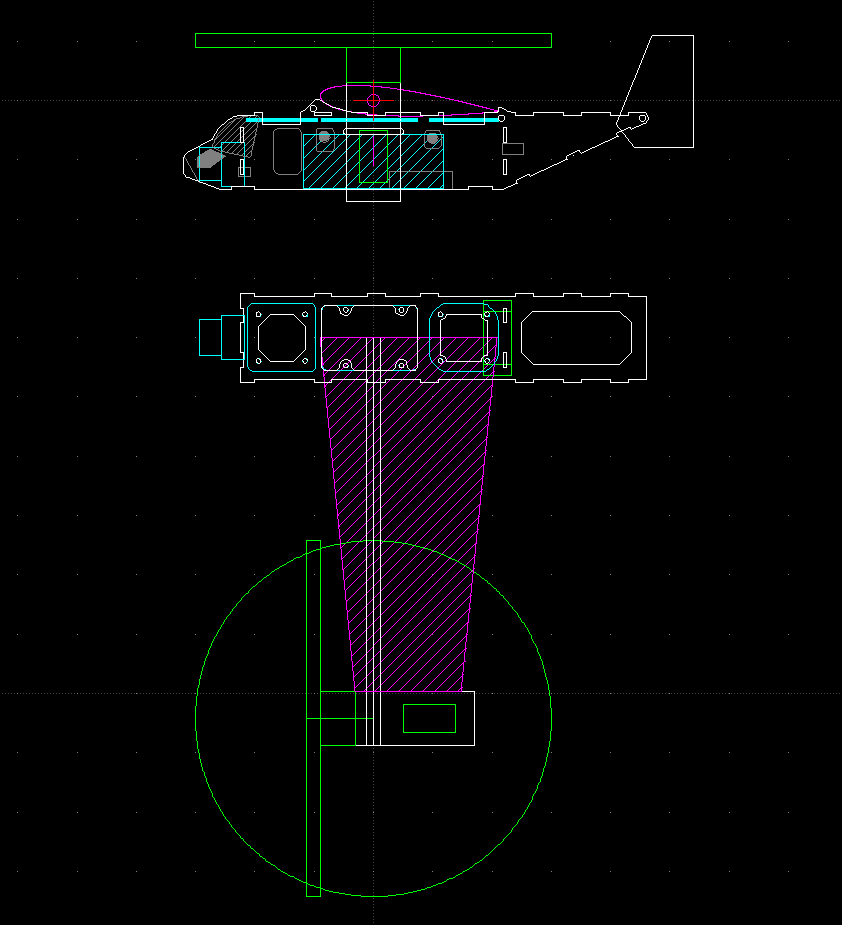CampRobber
Active member
I imported the wikipedia drawing, scaled it to make the rotors 6", and approximated it with round-ish numbers:

Known weights so far:
=196g
Stretch goal is 249 grams including wings, fpv and the 3S850, but I'm not sure if I'll get there.
The goal for now is to just get it hovering indoors in badly-designed-bicopter mode, then see how many grams are left for wings.
Known unknowns in no particular order:

Known weights so far:
Motor FT1806/2380 | 20 x 2 = 40 | ||
ESC LittleBee 20A | 7 x 2 = 14 | ||
Servo MG90 | 13 x 2 = 26 | ||
Prop 0603 | 2 x 2 = 4 | ||
FC F411Wing | 7 | ||
Optic Flow / Lidar | 3 | ||
Carbon Fiber Tube 6mm x 1mm x 350mm | 8 | ||
Nacelle | 3 x 2 = 6 | ||
Fuselage | 13 | ||
Battery 3S850 | 75 |
=196g
Stretch goal is 249 grams including wings, fpv and the 3S850, but I'm not sure if I'll get there.
The goal for now is to just get it hovering indoors in badly-designed-bicopter mode, then see how many grams are left for wings.
Known unknowns in no particular order:
- Wing size. I don't think an exact scale Osprey would fly. My reasoning is, without variable pitch props it's not going to be able to both hover reasonably efficiently and also reach the speeds required for a tiny wing to work.
- Airfoil. My thinking is that it would work best with some airfoil that has tons of lift and no pitching moment, ever, but maybe shitty drag. I'm not sure if that exists.
- Props. Going to try the 0603s at least, but sort of wondering if there's something quieter and more efficient and not much heavier than 2.3g.
- Servo performance. Some bicopters I've read about use servo feedback. Or at least are using higher performance servos. Are cheap servos with no feedback going to be a problem?
- Nacelle angular range. I'm planning to link the servo shaft to the spar tube with laser cut gears so I can set the ratio. The MG90 supposedly has 180 degrees of motion. I want as much torque as possible.
- Tail. If the wing is bigger this will have to be bigger and/or further aft. One option is using another carbon spar tube as a tailboom.
- FC software. Does anything actually support this type of vehicle out of the box? I know you can do 2+2 mixes in inav but no idea how transition would work.






